- Playful and unique styling
- Well equipped for the price
- Long service intervals
- Still some features missing
- Dual-clutch auto needs tuning
- Sparse rear seat and boot
When the Nissan Juke was released locally for the 2013 model year, it offered flair and differentiation to the rest of the Nissan range with quirky styling and relative practicality. Nowadays, the market is different and there are several other quirky offerings, such as the Toyota C-HR and the Mitsubishi Eclipse Cross, to keep the Juke honest. We tested the top spec 2021 Nissan Juke Ti-O (also known as Juke Ti Energy Orange) to see if it still has a lot to offer in the small SUV segment of if your money should be going elsewhere.
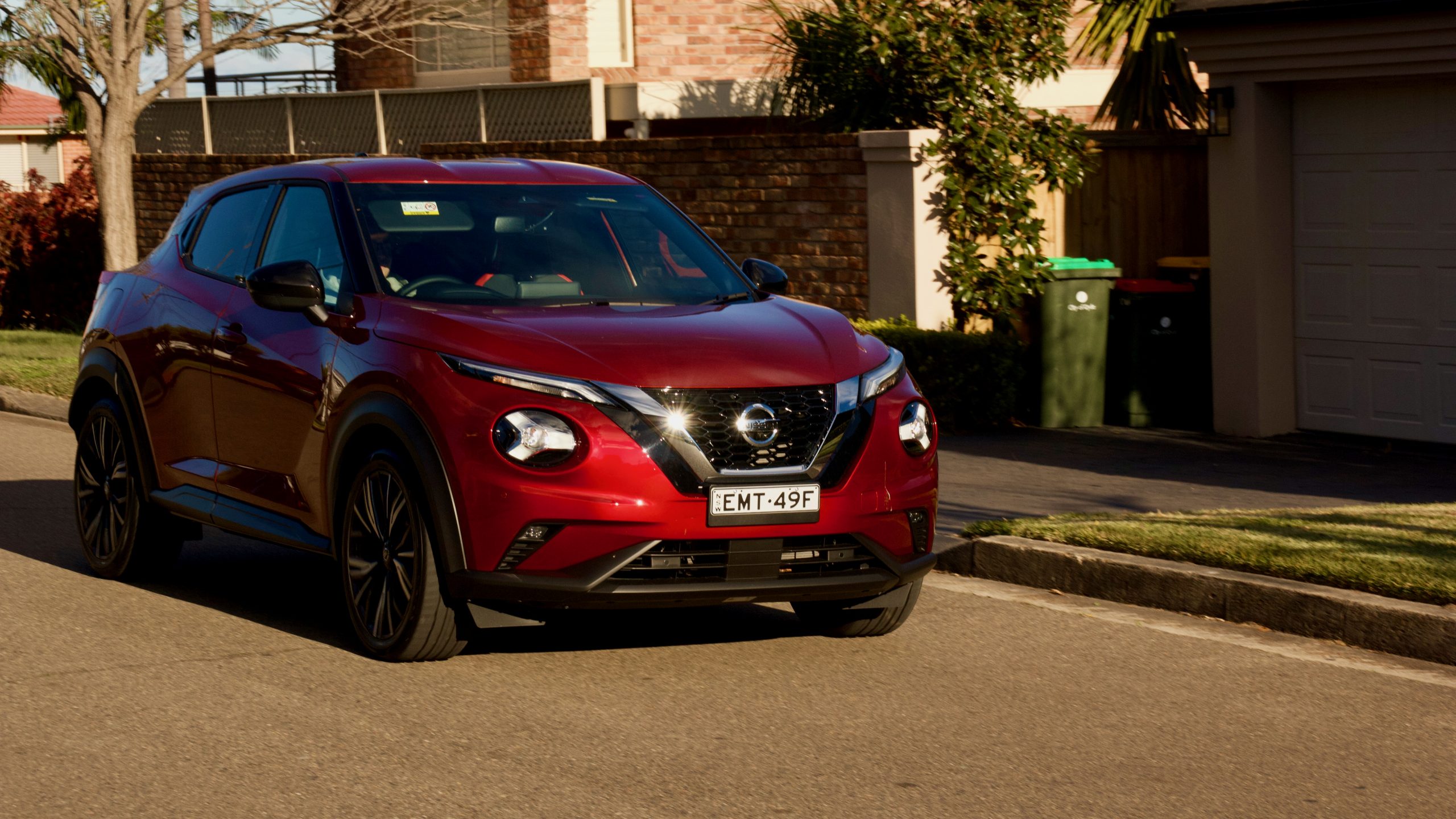
The top-spec Ti-O variant of the Nissan Juke is new for the 2021 model year and is basically a Juke Ti with the optional Energy Orange-accented interior. It offers even more personality to the already interesting and intriguing Nissan Juke range.
Price & Specs: 8/10
The Nissan Juke range kicks off with the entry level ST, which costs a reasonable $27,990 plus on-road costs. This undercuts the entry level Mitsubishi Eclipse Cross ES by $2,300 (Eclipse Cross ES is $30,290) and the Toyota C-HR GXL by $2,925 (C-HR GXL is $30,915). Though the model we tested was the top of the range 2021 Nissan Juke Ti-O which comes in at $36,490 (plus on-road costs – drive away it’s $38,990). In comparison, the top-spec petrol Toyota C-HR Koba is $37,165 and the Mitsubishi Eclipse Cross Exceed is $40,790 – both plus on-road costs.
The Juke Ti-O comes with 19-inch alloy wheels, an 8.0-inch colour touchscreen with satellite navigation and live traffic updates, wired Apple CarPlay and Android Auto, digital radio, an eight-speaker Bose sound system with speakers in the headrests of the front seats, LED exterior lighting, auto lights and wipers, heated and auto folding exterior mirrors, keyless entry and push-button start, a 7.0-inch driver’s display, single-zone climate control, an auto-dimming rear view mirror, driving mode selection, heated front seats, leather upholstery and a front centre armrest as standard.
Standard safety features include front and rear parking sensors with a 360-degree camera, automatic high beam, an alarm, autonomous emergency braking (AEB) with cyclist and pedestrian detection, adaptive cruise control, forward collision warning, blind-spot monitoring with rear cross-traffic alert, lane departure warning, lane keep assist, driver fatigue monitoring, traffic sign recognition, tyre pressure monitoring, six airbags and a five star ANCAP safety rating.
While the Juke Ti-O has quite an extensive standard equipment list, we would like to see the addition of features such as dual-zone climate control, an electric driver’s seat and a sunroof to better compete with price-point rivals.
There are also a range of other competitors to the Juke as the small SUV market is extremely populated: the Skoda Kamiq, Ford Puma, Volkswagen T-Cross and T-Roc, Hyundai Kona, Kia Seltos and the MG ZS T. The Juke makes itself known and separates itself from the crowd with quirky styling, an interesting interior design and funky colour options.
The only standard colour option for the 2021 Nissan Juke is our test car’s ‘Fuji Sunset Red’ – all other colours attract a $595 charge and include ‘Pearl Black’, ‘Gun Metallic’ (grey), ‘Platinum’ and ‘Ivory Pearl’. It is also worth noting that the Nissan Juke Ti is the same price as the Ti-O and is identically specced, just with black leather upholstery instead of the orange leather in the Ti-O.
Performance & Economy: 8/10
While the larger Qashqai is offered with a 2.0-litre four-cylinder engine, the sole offering in the 2021 Nissan Juke range is a smaller 1.0-litre turbocharged three-cylinder petrol unit. It produces 84kW of power and 180Nm of torque, which doesn’t seem like much, but we found the Juke’s drivetrain to be more than adequate. Matched to that engine is a seven-speed dual-clutch automatic transmission with no manual option available in Australia.
We think the Juke’s drivetrain is a charming and characterful unit that makes quite a satisfying little thrum when driving although there is a whine that comes from the drivetrain when the car is shifting up. But the full 180Nm hits at 2,400rpm, and provides more than satisfying shove at lower speed. There is also a drive mode selector in the centre console where you can go between eco, standard and sport mode. Sport mode holds hears for longer, stiffens up the steering and sharpens the throttle response while eco mode does the opposite to extract the best fuel economy out of the engine.
When setting off, acceleration in the Juke does feel slower than the C-HR and Eclipse Cross thanks to the slow nature of the dual-clutch automatic transmission – it bogs down and takes a moment to get going, which is frustrating. Once you’re moving though, the transmission changes gears very quickly and with little fuss. Unlike most other cars though, there is no manual mode selector option on the gear knob – to activate manual mode, you have to press and hold one of the steering wheel paddle shifters.
The claimed average fuel consumption for the 2021 Nissan Juke Ti-O is 5.8L/100km. With a mixture of urban and highway driving we achieved an average of 7.0L/100km, which we deem to be pretty good. The Eclipse Cross has a claimed average of 7.7L/100km and the C-HR has a claimed average of 6.6L/100km, which are both higher than the Juke’s claimed average. It is also worth noting that RON95 and above fuel is recommended for the Juke just like the Toyota C-HR, whereas the Mitsubishi Eclipse Cross can take regular unleaded.
Transmission aside, our only issue with the Juke is that the previous model offered up to 160kW of power, almost double that of this generation of car. We’re hoping a larger engine is made available – even 120kW 1.3-litre turbo four-cylinder engine from the new Qashqai would be great.
Ride & Handling: 8/10
Like a lot of other small SUVs, the driving experience of the Juke is not perfect, though it’s a massive improvement on the previous generation car. The ride of the 2021 Nissan Juke Ti-O can be a little fidgety around town due to the large 19-inch wheels – they do seem a little unnecessary on a small SUV. The suspension does do a good job of soaking up the bumps but there is only so much it can do before the wheels start to make it a bit uncomfortable. Around town is where you feel this the most and on a freeway or at higher speeds, it’s solid and comfortable.
The one thing the larger 19-inch wheels are good for is the handling. The Juke Ti-O handles quite well when compared to its rivals. This could be due to the quick and nimble steering, which is a joy to operate and also because of the low weight of the Juke (kerb weight of 1,275kg). The Nissan Juke corners relatively flat and with little effort though it’s hardly a sports car – the Ford Puma is the sportiest option in the small SUV segment, if you’re wondering.
The active safety features of the 2021 Nissan Juke Ti-O do a good job of making the driving experience safer. Unlike a lot of other brands, they all aren’t immediately obvious when you are driving around – the forward collision warning sometimes does make an appearance every now and then as it is a little sensitive, as is the lane departure warning system. The lane departure warning can be turned off easily with a button to the right of the steering wheel.
Interior & Practicality: 7/10
The dash design of the 2021 Nissan Juke Ti-O is very interesting to look at. It has a large leather wrapped portion in orange to differentiate it from other drab small SUV interiors. It also has circular air vents that are a joy to operate as they have a satisfying click when moved. The door panels, centre console and seats are also covered in Energy Orange upholstery, making the interior feel brighter than the regular Juke.
Compared to other Nissan interiors such as the X-Trail and Qashqai, the Juke’s interior features much better materials and build quality. The dash is partially leather wrapped, the leather quality of the seats is fantastic and the door panels are even leather wrapped. There is orange ambient lighting scattered around the cabin and the steering wheel is a fantastic item with a flat bottom design and chunky grips.
Centre of the Juke’s cabin is an 8.0-inch touchscreen with many features such as wired Apple CarPlay and Android Auto, satellite navigation with live traffic reports and digital radio. It’s the first implementation of this system in Australia and while the screen quality is good, it’s not the most intuitive system to use and it can be slow to react to touch. The 360-degree parking camera is excellent, though, with great quality.
The seats are comfortable and supportive and while we would like to see electric operation for at least the driver’s seat, they are easy to get into a comfortable position without much fuss. The lumbar adjustment for the driver’s seat is a nice touch – but where is the same for the passenger? There are also the Bose ‘Personal Plus’ speakers in the front headrests of the Juke, which don’t make as much of a difference as you may think – nowhere near as much as the same system in the Mazda MX-5.
There are various storage options in the 2021 Nissan Juke Ti-O’s cabin such as generous door bins, a place to store a phone or wallet in front of the gear selector, a big glove box, a centre console and two cupholders behind the gear selector – though the door pockets aren’t huge, and there’s no wireless phone charging.
The rear seats in the Juke offer an adequate amount of room with leg, head and shoulder room best described as ‘okay’. There is also no form of rear air-vents or arm rest and only a single USB-A port, meaning the kids are going to fight over who needs it more.
With the rear seats in place the Juke offers up a solid 422-litres of cargo space, which is 17-litres more than the Eclipse Cross and 104-litres more than the C-HR – though there are no clever touches in the boot such as hooks, nets or a dual-level system. Folding down the split-folding rear seats opens the space up to hold a pretty large 1,305L, though there’s a huge ridge with the seats folded.
Service & Warranty: 7/10
The 2021 Nissan Juke Ti-O comes with the brand’s five-year unlimited kilometre warranty with five years of roadside assistance as standard. This is the same warranty that Toyota offers with the C-HR, though the Eclipse Cross comes with a 10-year/200,000km warranty (if serviced at Mitsubishi).
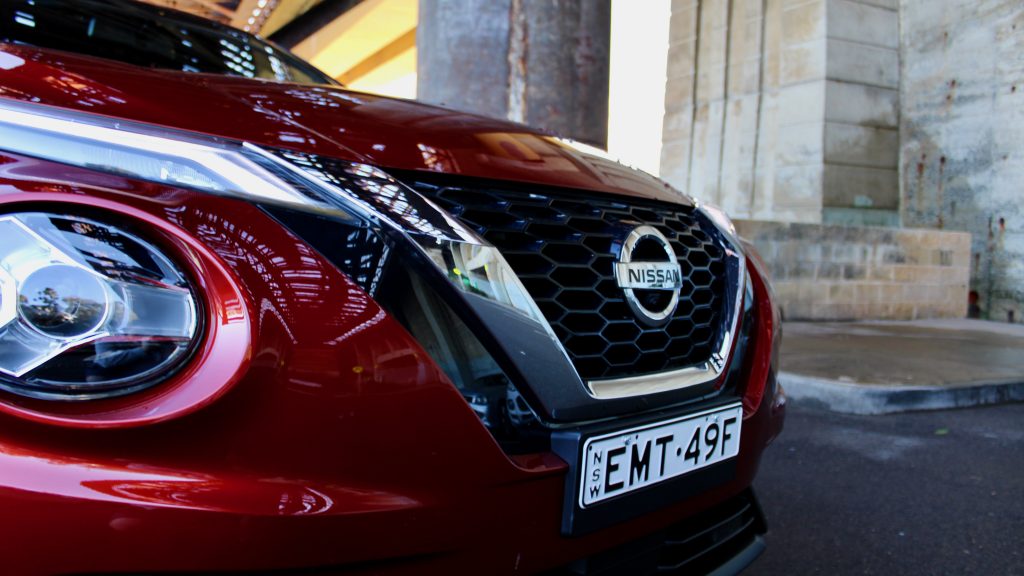
The first six serviced for the 2021 Nissan Juke Ti-O are capped price with no surprises. The service intervals for the Juke are 12-months or 20,000km, which are better than the C-HR and Eclipse Cross’s 12-month/15,000km intervals. Servicing the Juke over the span of three years or 60,000km will set owners back $1,337, which is more than double what Toyota charge to service the C-HR over the span of three-years or 45,000km ($600) and more than the $897 it would cost to service the Eclipse Cross over three-years or 45,000km. The Juke’s service cost over five-years or 100,000km is $2,182.
2021 Nissan Juke Ti-O DiscoverAuto Rating: 7.6/10
While the 2021 Nissan Juke Ti-O is a quirky and cute little SUV it is in the most populated category of SUV meaning for it to stand up to the crowd it needs to be different. Luckily the Juke delivers with good standard equipment, safety features and a well put together cabin. There are the usual Nissan drawbacks such as the expensive servicing and the choppy ride, plus an unimpressive infotainment system, but there are more than enough positives to make up for that.
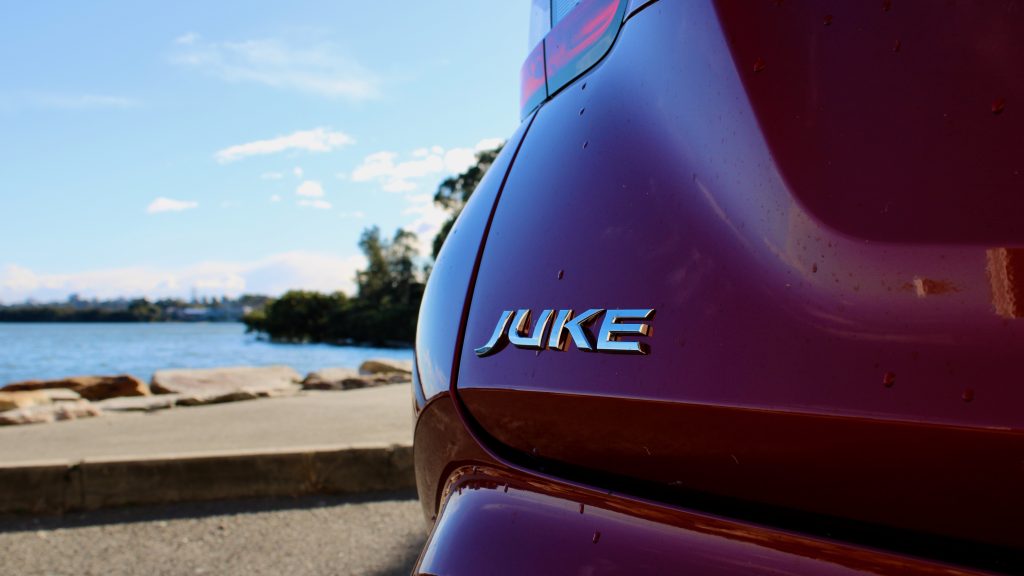
Would we buy a Nissan Juke over a Toyota C-HR or Mitsubishi Eclipse Cross? Definitely. The Juke offers more character than those cars, as well as a higher quality interior, a superior drivetrain and a much newer feeling. It also comes with a big boot, a funky interior and a better value equation than those rivals, and for that, we welcome the Juke’s arrival into the small SUV segment.
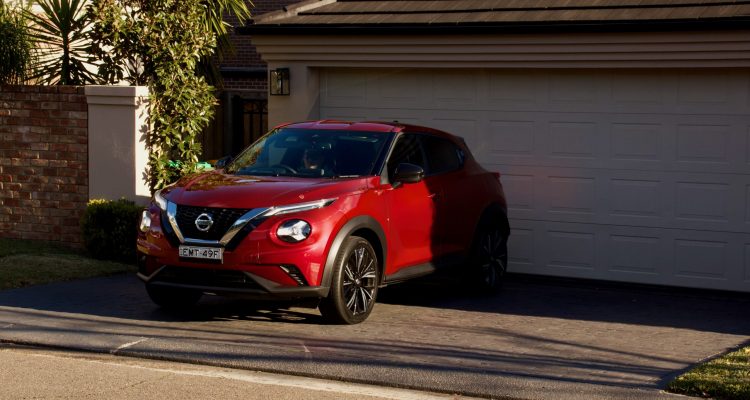
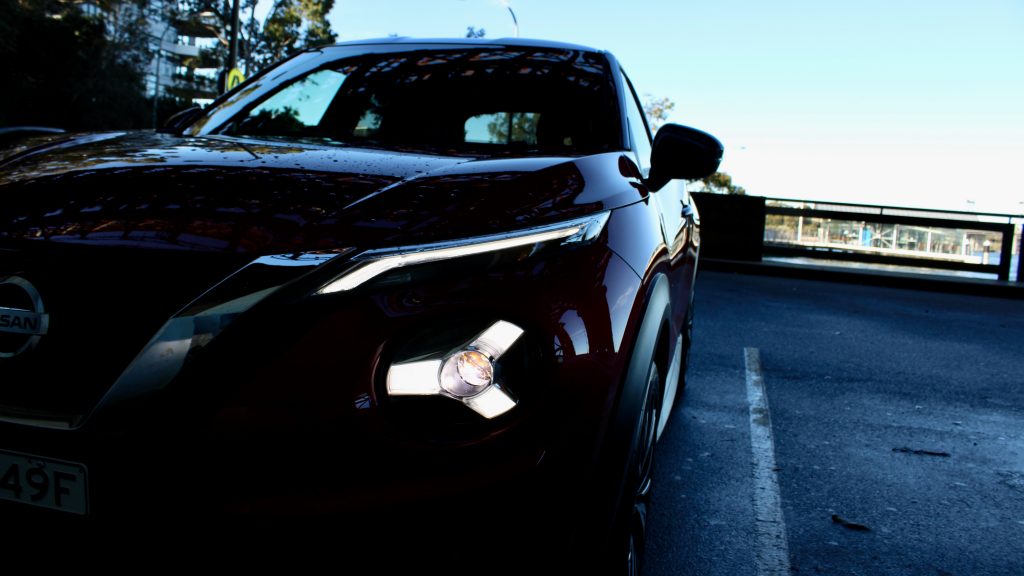
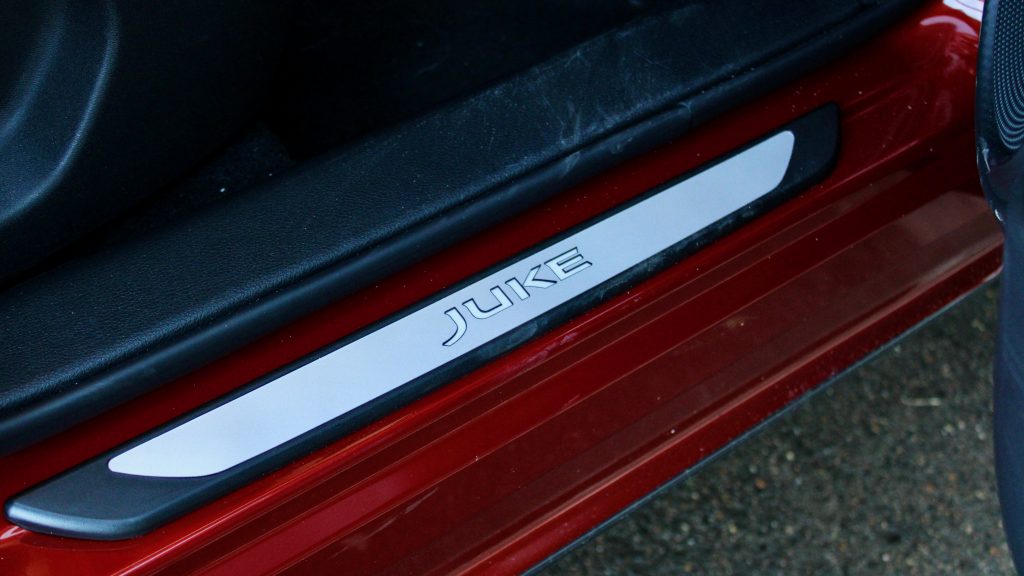
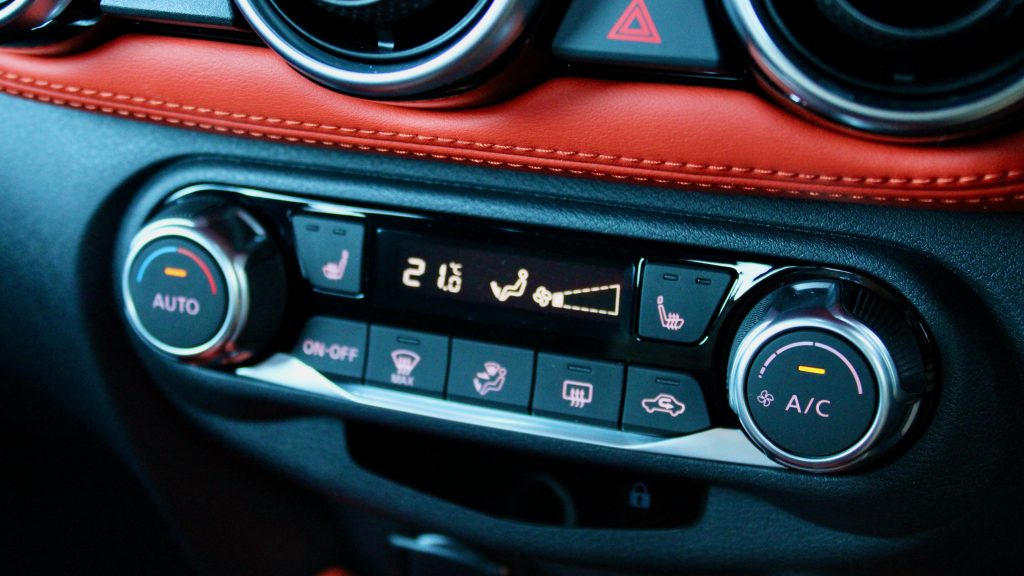
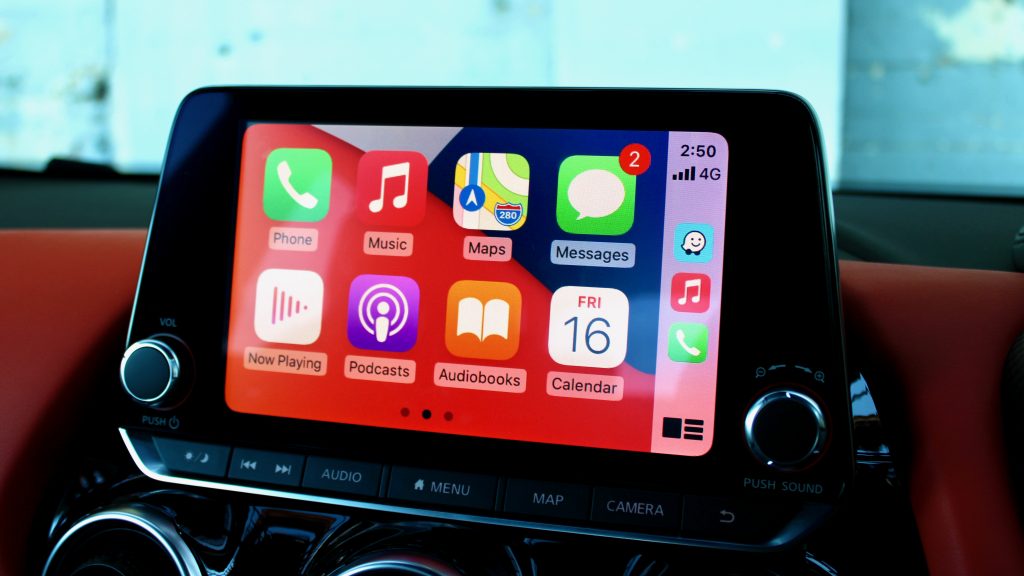
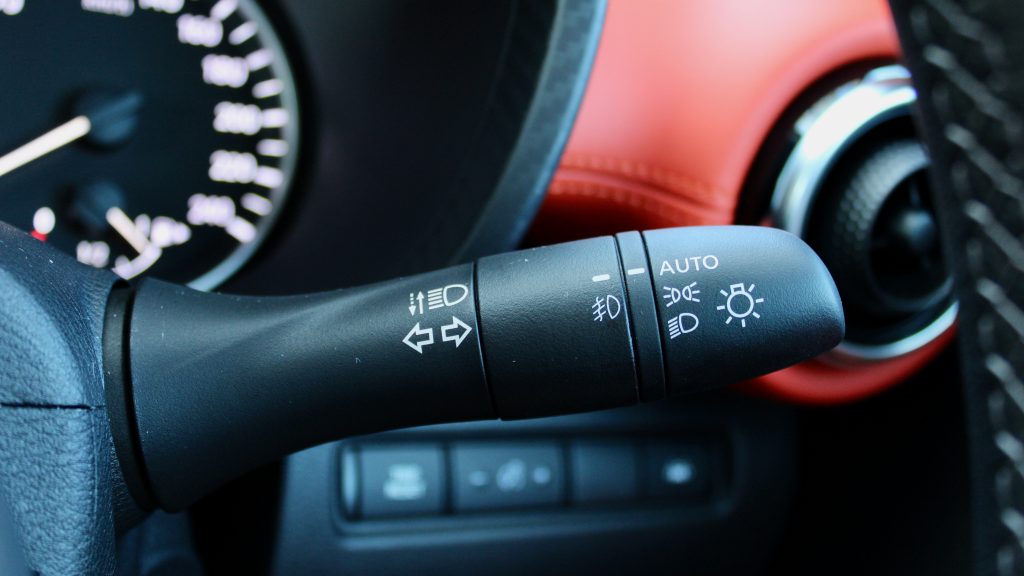
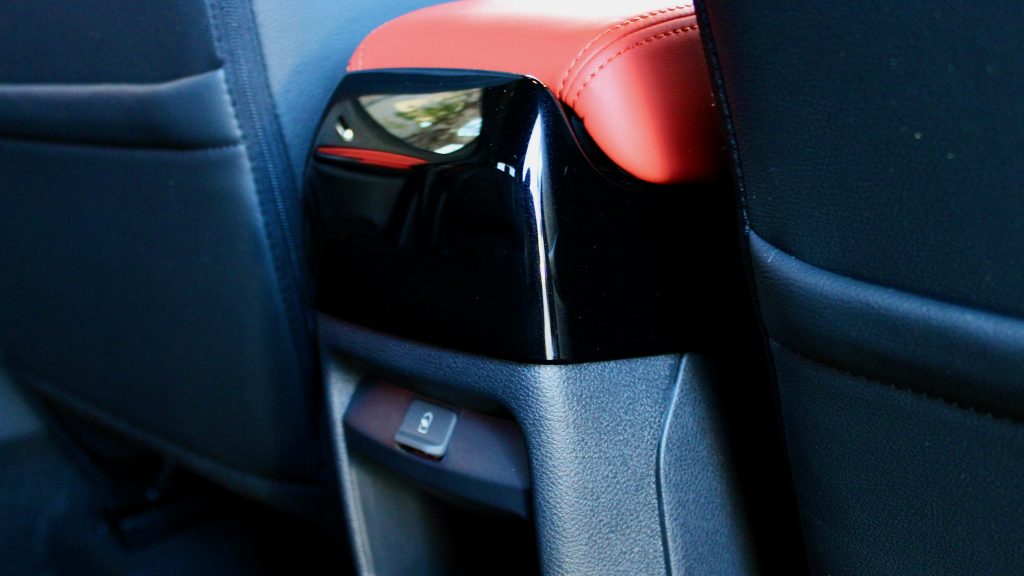
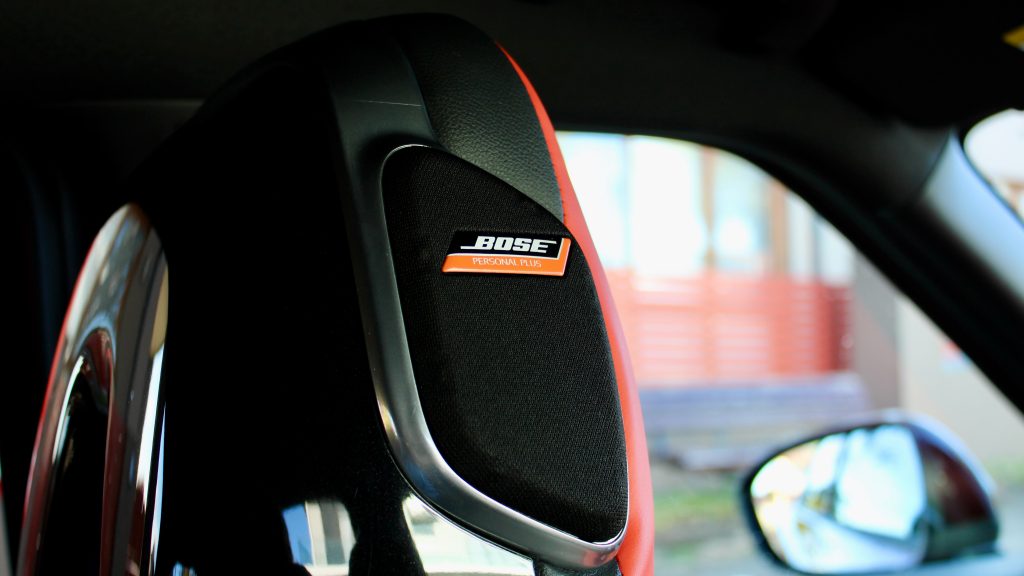
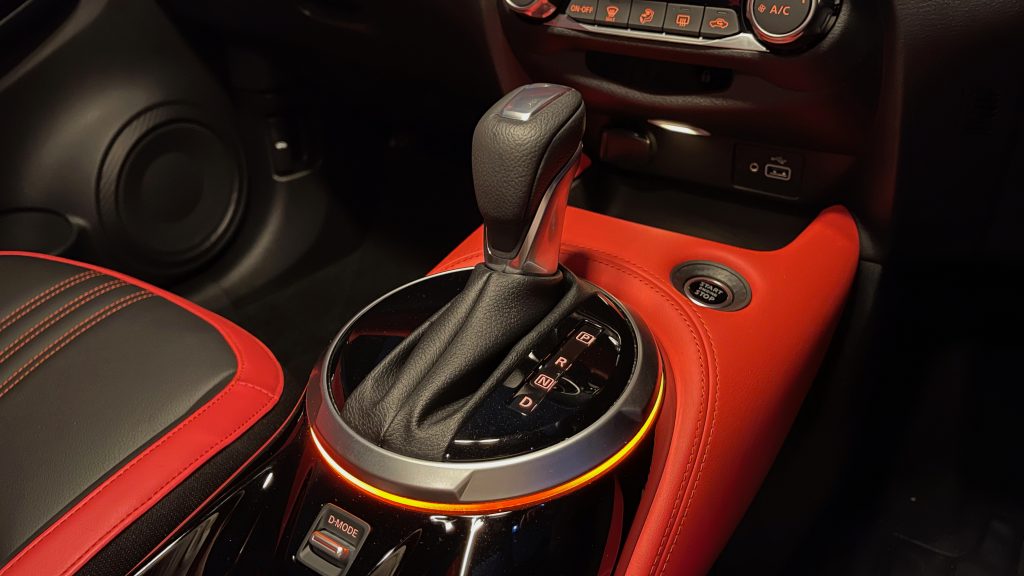
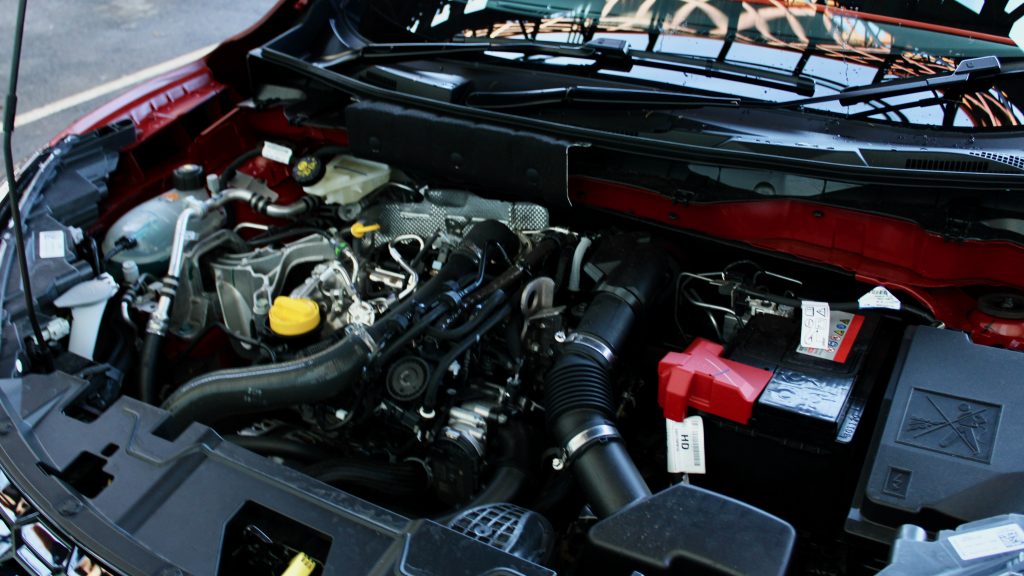
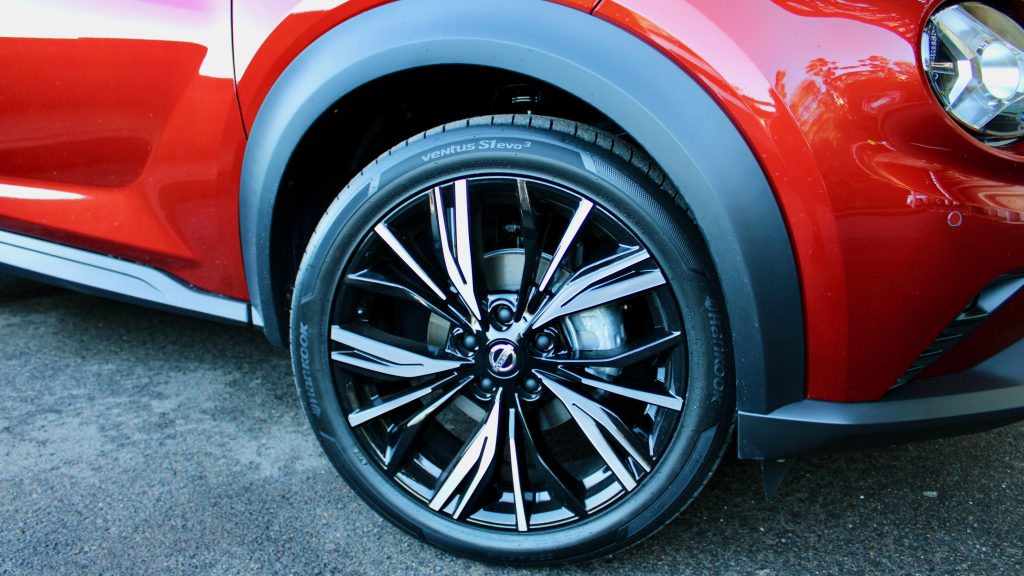
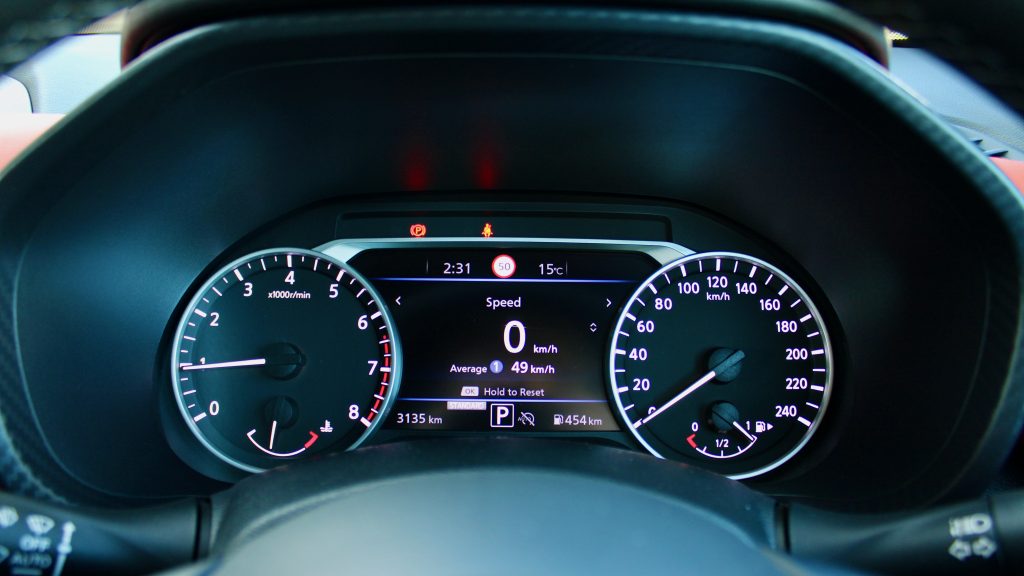
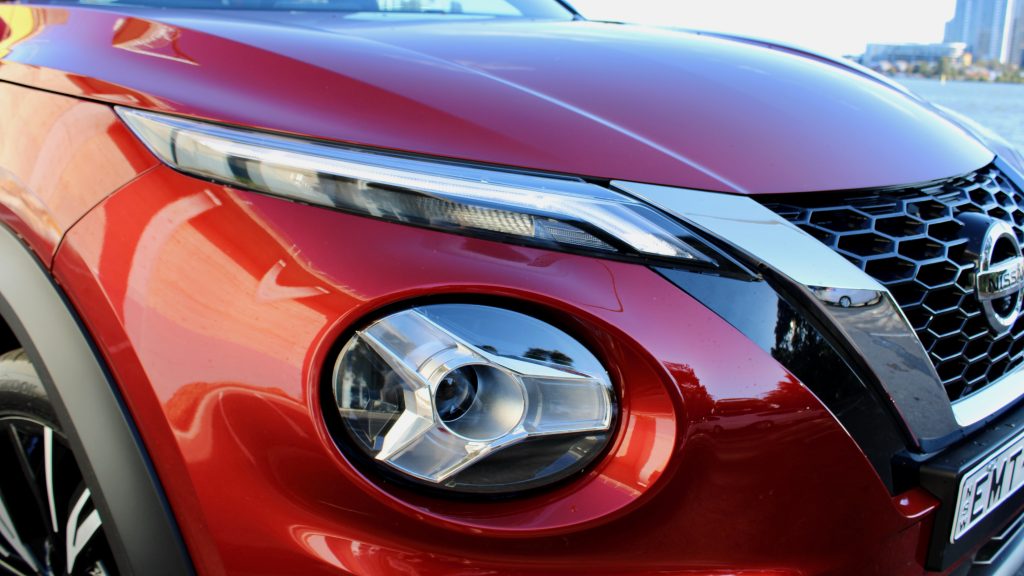
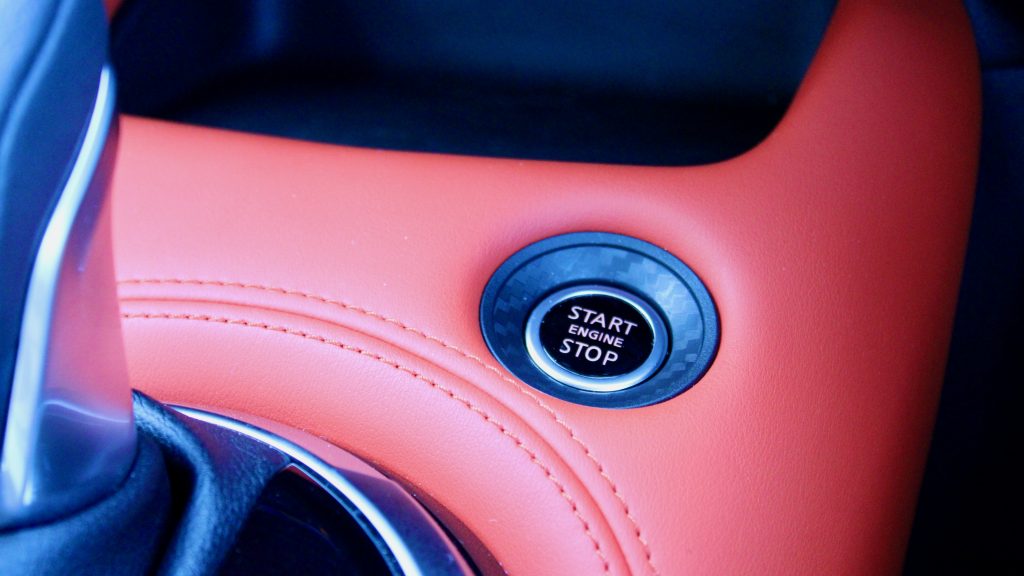
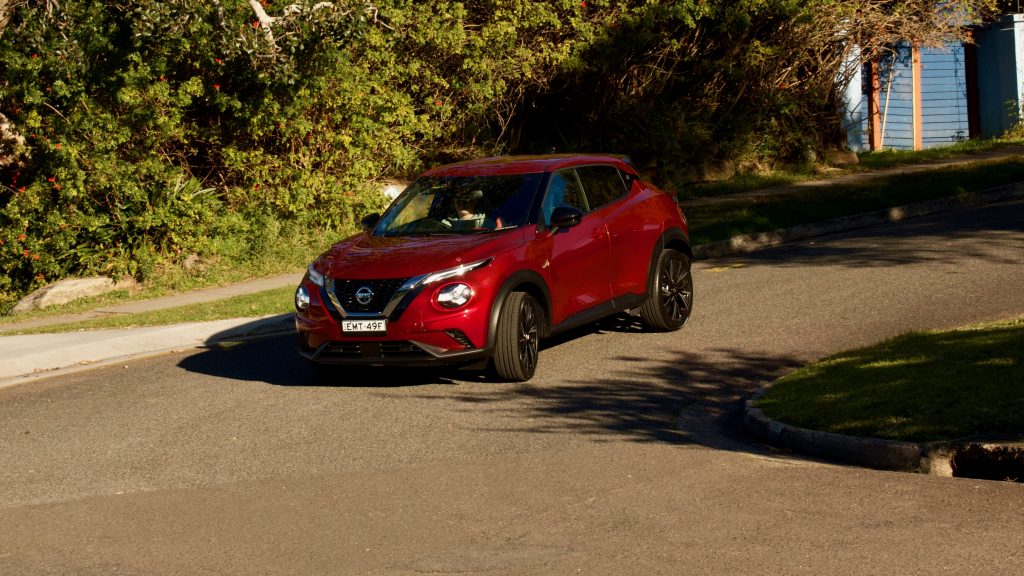
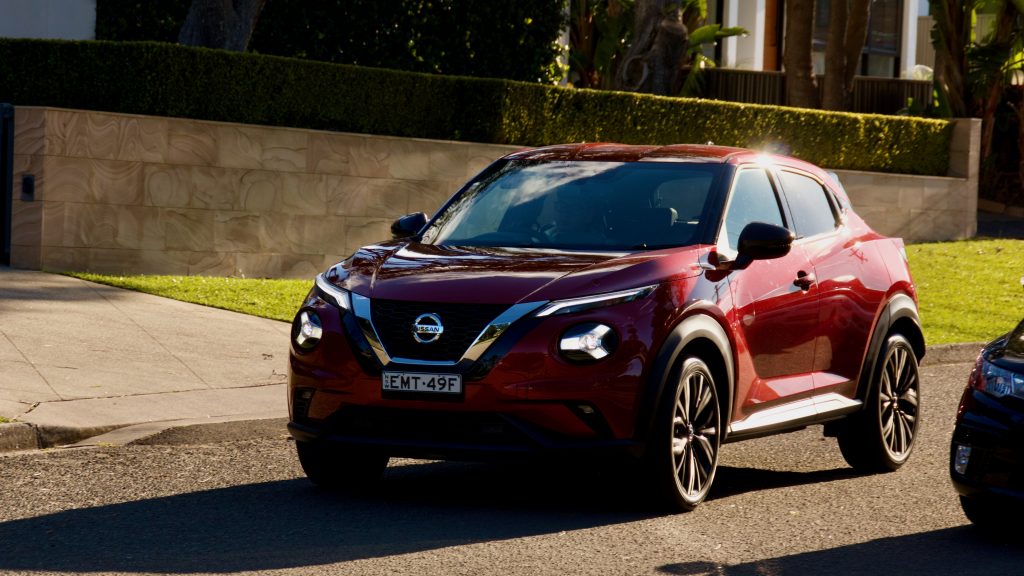
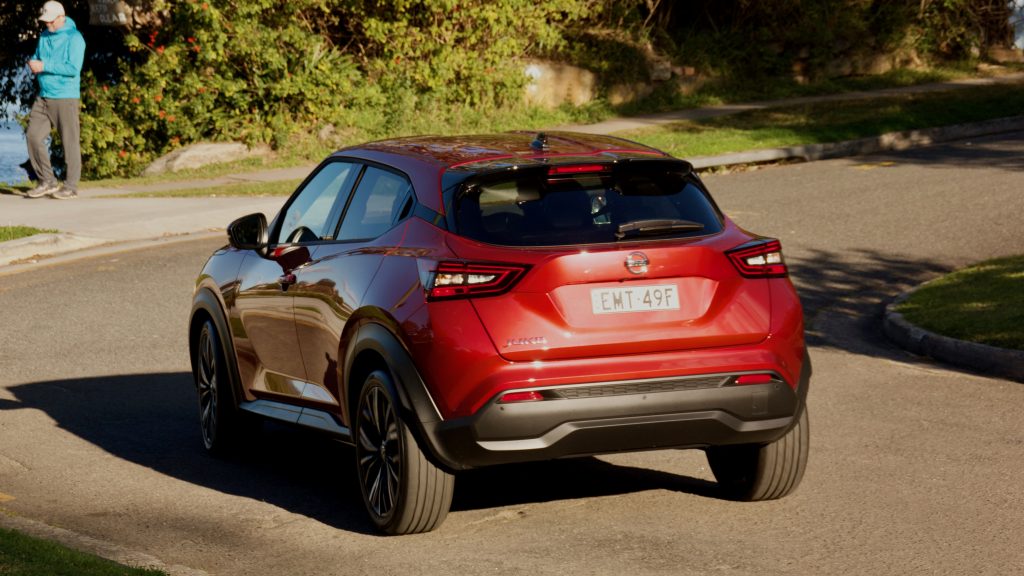
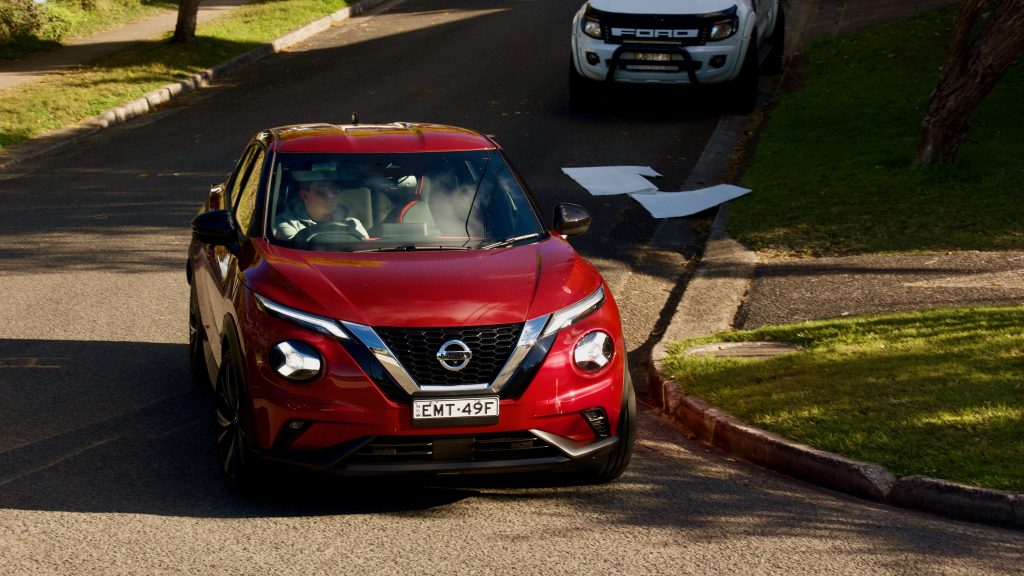
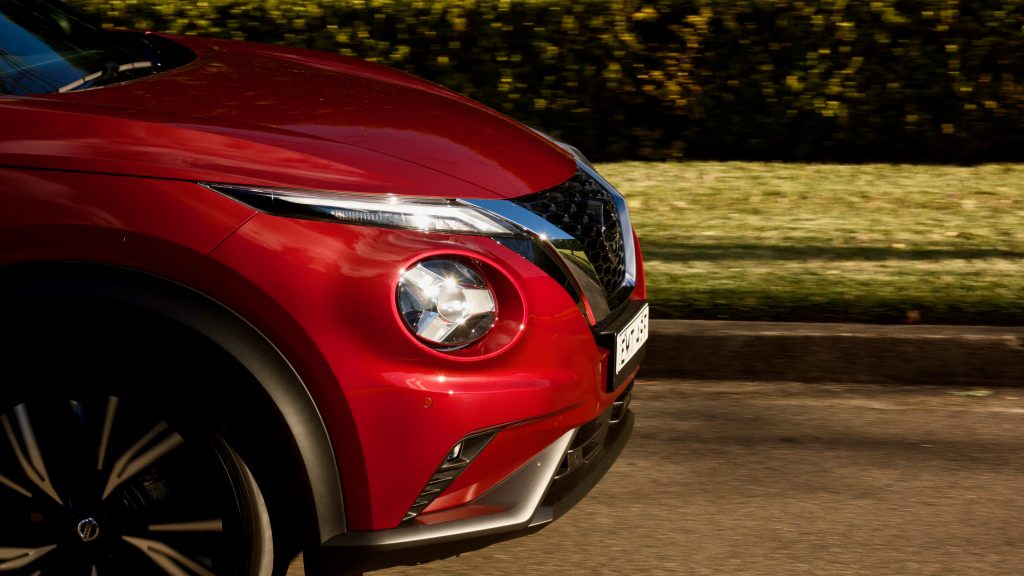
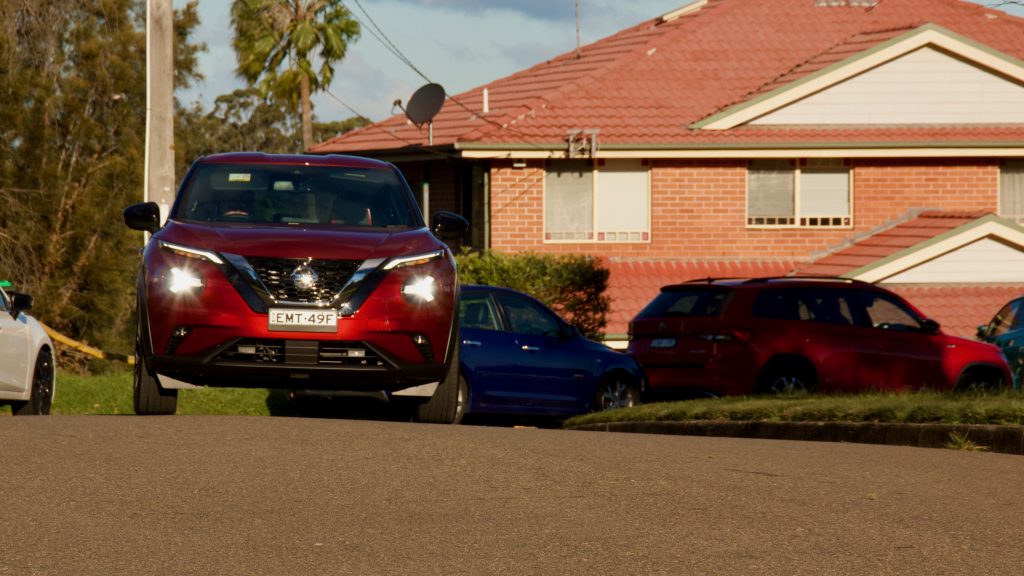
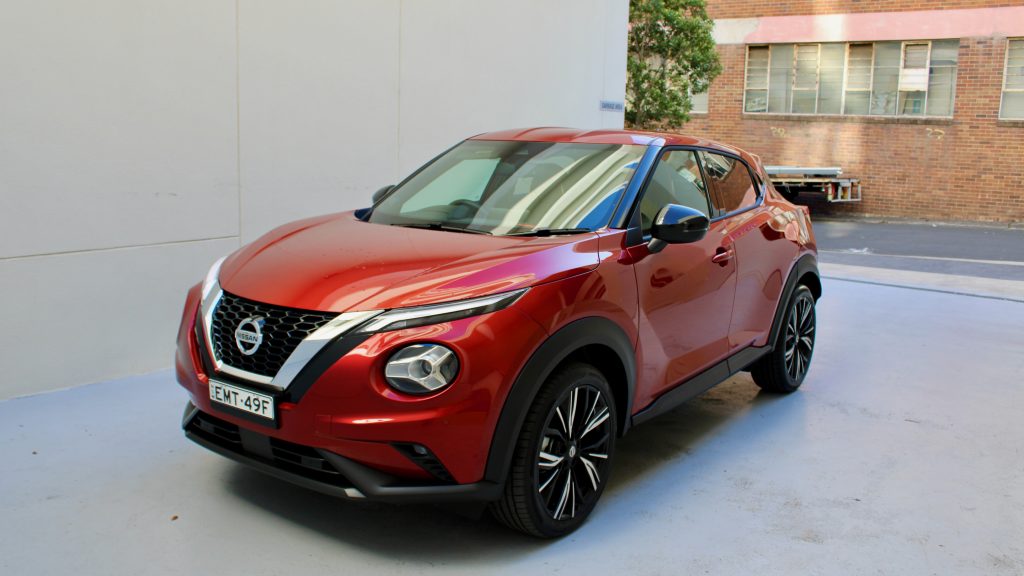
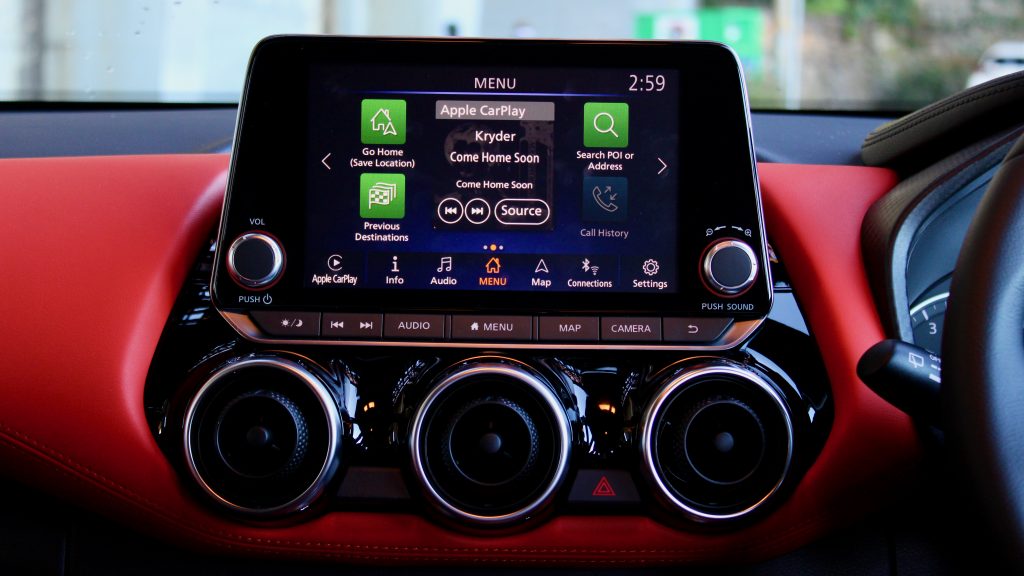
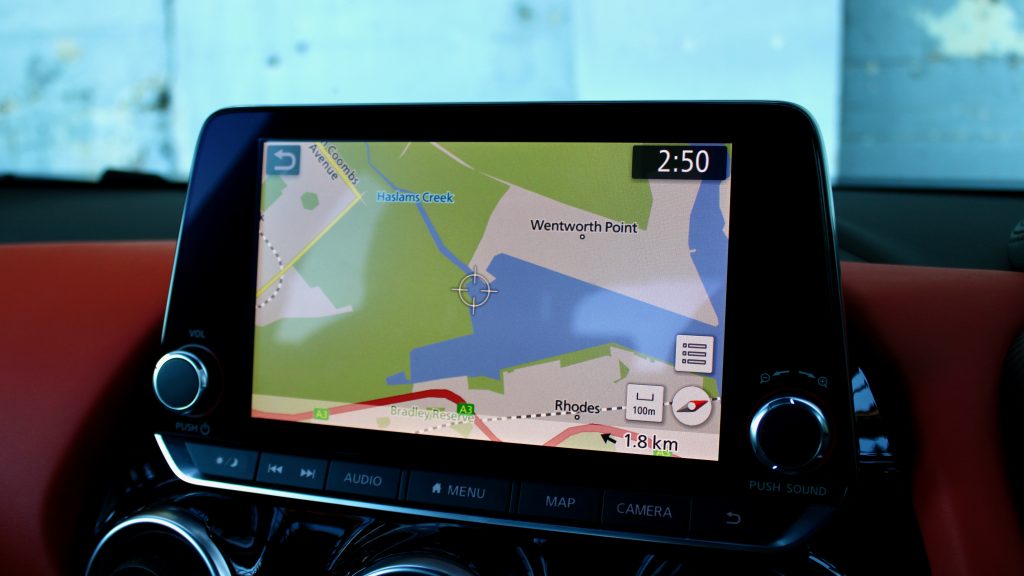
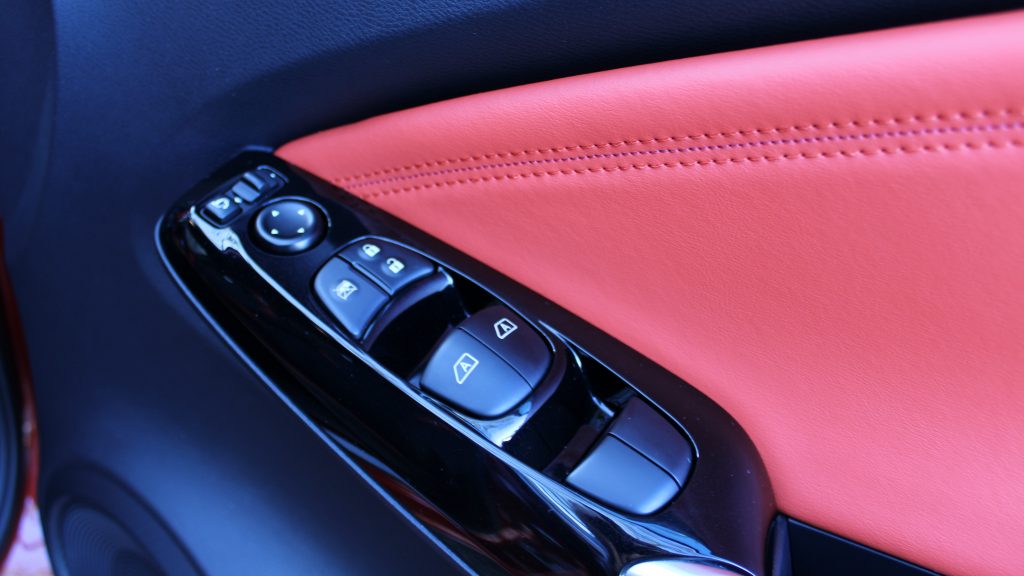
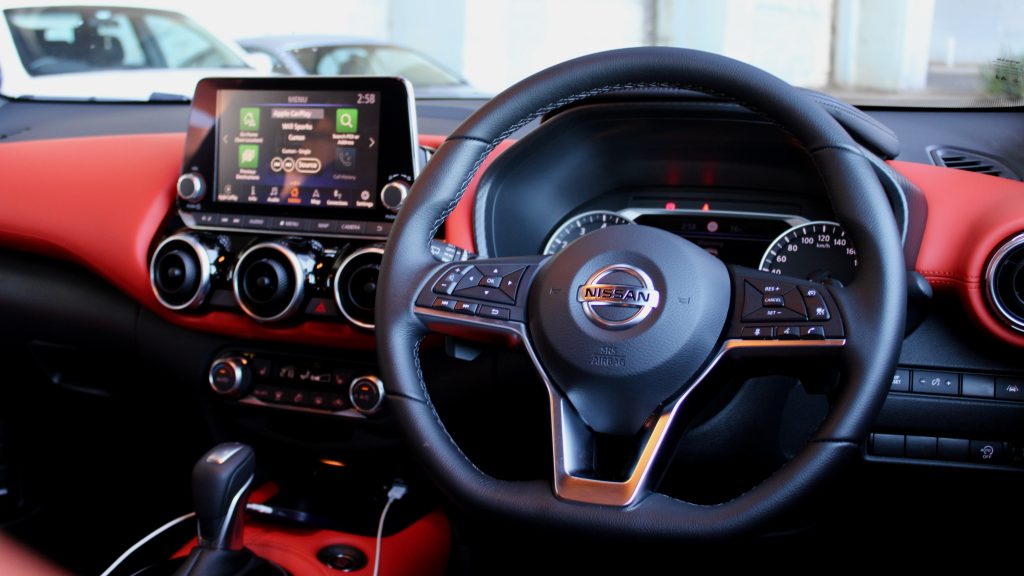
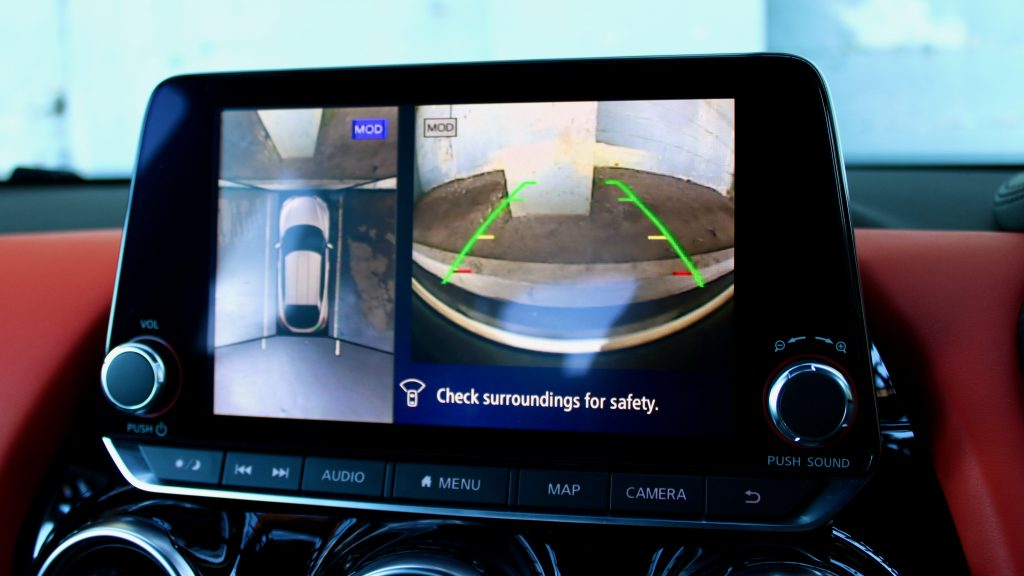
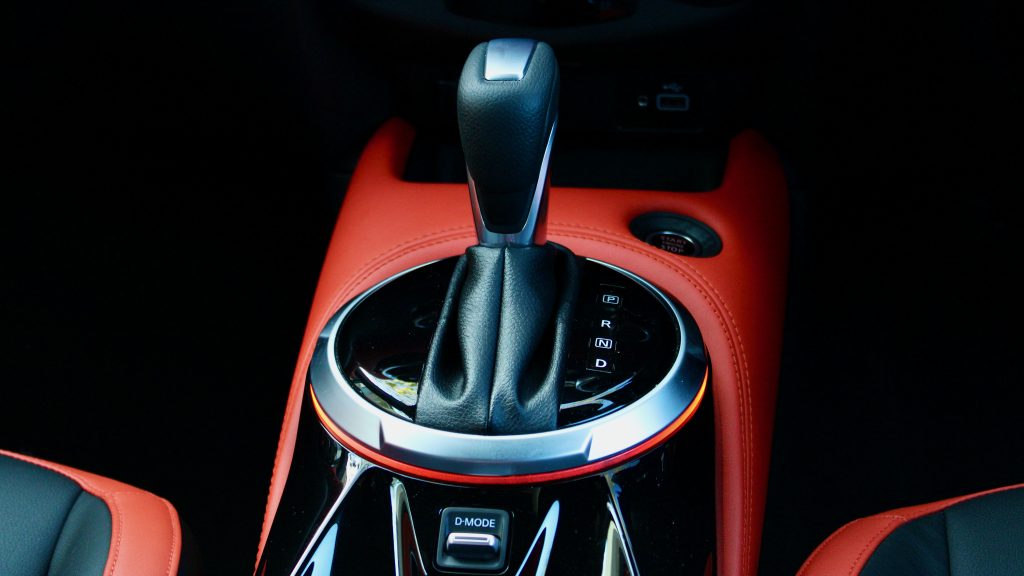
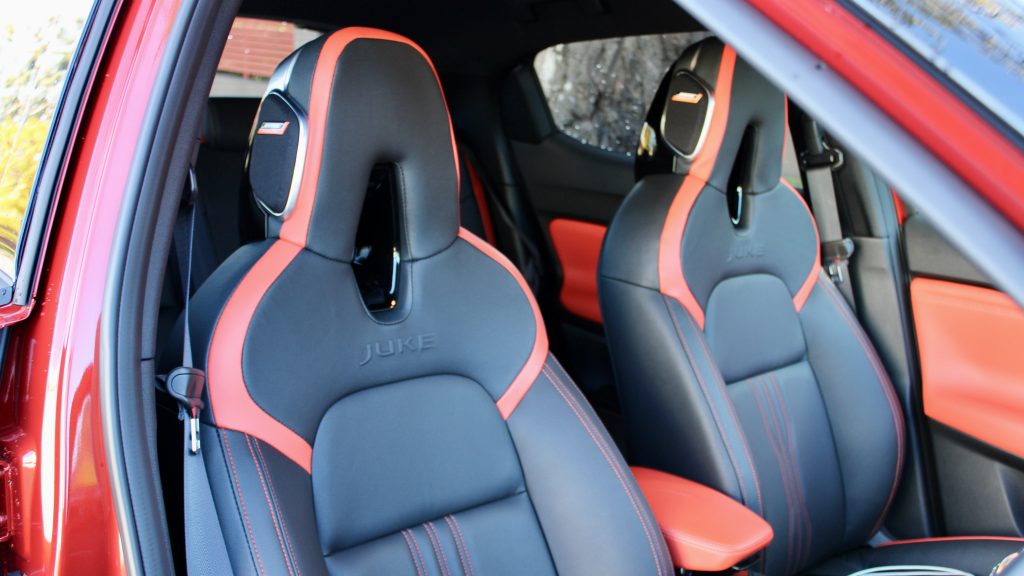
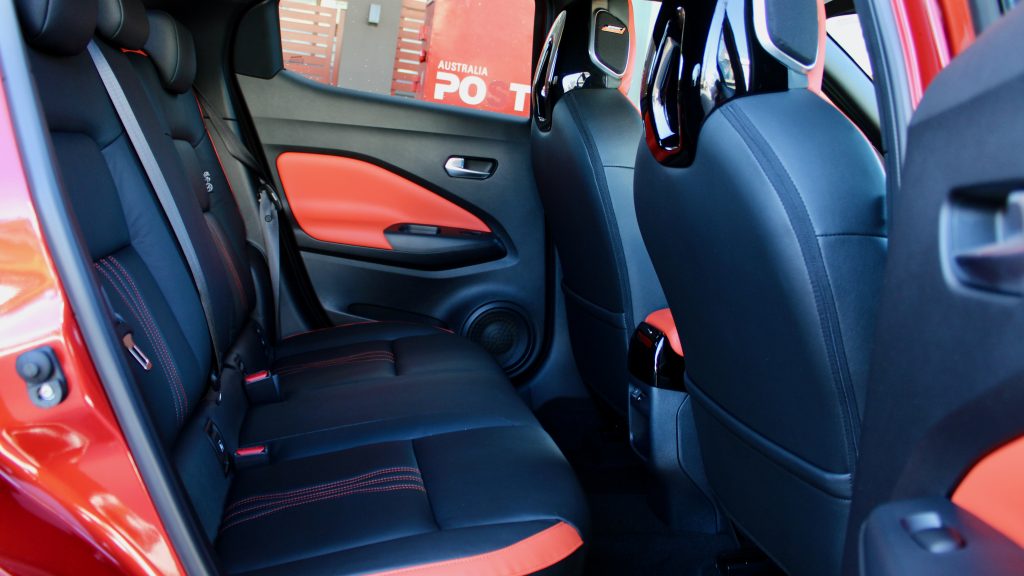
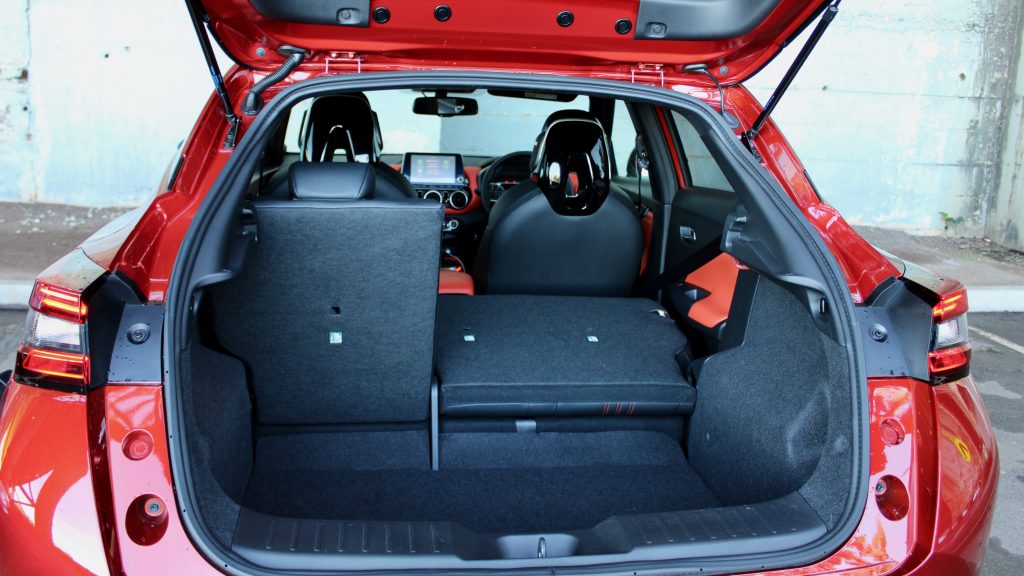
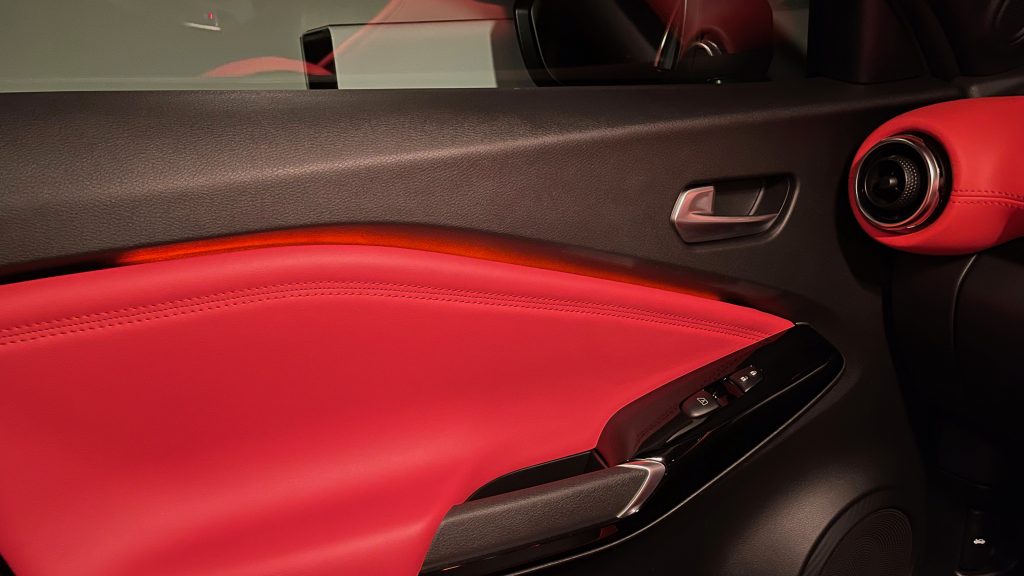
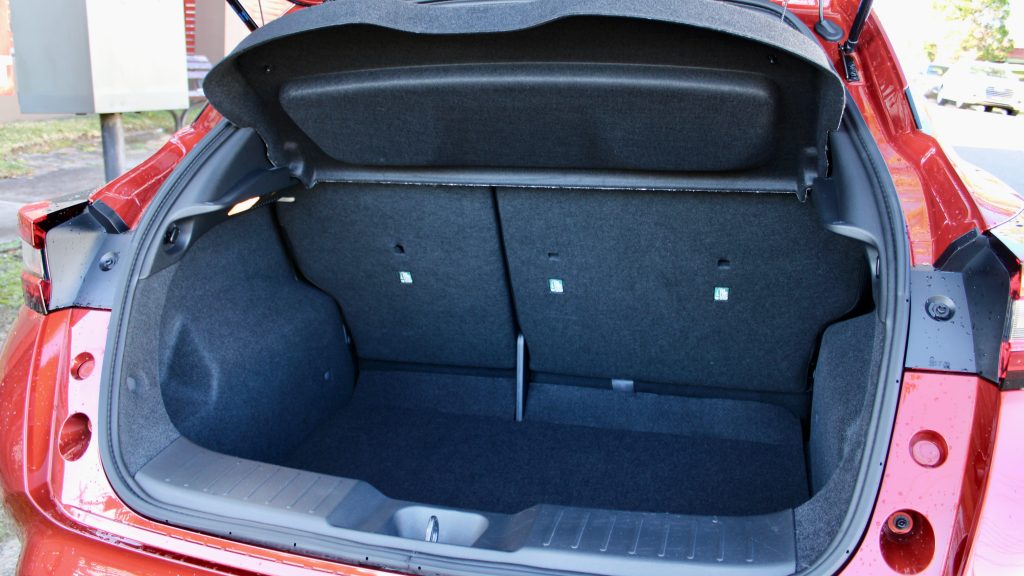
Leave a Reply